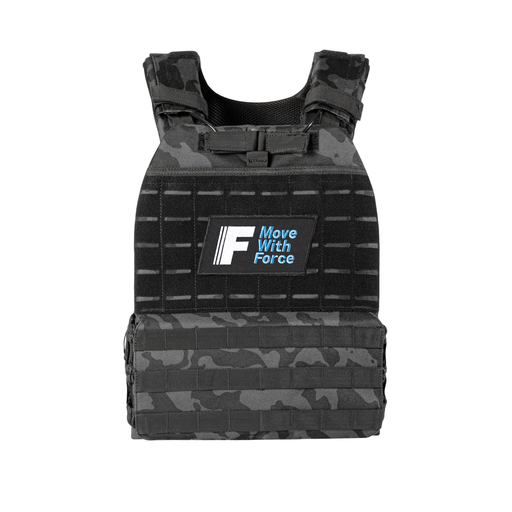
Rucking vs. Tabbing – what’s the difference?
At Force Fitness we always use the term “rucking” to talk about walks or hikes using a weighted backpack (or rucking plate carrier). But we know that some people refer to “tabbing”. What’s the difference, and why do we always say rucking and not tabbing?
Whilst rucking and tabbing might seem similar, they have distinct differences in history, culture and how-to.
What is rucking?
Rucking, also known as weighted walking, involves walking or hiking over distances with an external load on your back. Traditionally this has been done with a loaded backpack (also known as a ruckpack, rucksack or ruck). But you can also use a weighted vest or weight plate carrier designed for rucking.
The weight you use can vary, but it traditionally included items such as water, food, and additional weights like dumbbells or sandbags. Rucking has a military background and is often used in military fitness tests. As military training, it’s a great way to build endurance, fitness, and mental toughness.
Key features of rucking
A weighted pack - ruckers carry a weighted backpack to increase the resistance and intensity of the exercise. You can adjust the weight to match your fitness levels and goals.
Steady pace - rucking is usually done at a steady pace, somewhere between a brisk walk and a march. The goal is to cover long distances with good form and posture.
Endurance training – although rucking can also burn bodyfat, it primarily focuses on building endurance, cardiovascular fitness, and leg strength.
What is tabbing and how is it different to rucking?
Tabbing is a military term - short for "Tactical Advance to Battle - that combines walking, jogging, and running over various terrains while carrying heavy loads, often in full combat gear. As you can imagine, tabbing is more intense and fast-paced than rucking, and has a much stronger connection with military training and operational fitness. This is one of the main reasons we use the word “rucking” at Force Fitness, rather than “tabbing” – we’re not from a military background and don’t pretend to be.
Key features of tabbing
Combat readiness - tabbing is designed to simulate moving quickly with heavy equipment in unpredictable combat situations.
Heavier gear - tabbers typically carry heavier loads than ruckers, often full military gear, weapons, body armour, and helmets.
Operational fitness - tabbing is primarily used to prepare soldiers for combat situations, with less of a focus on steady endurance and more on speed and agility in challenging environments.
Comparing rucking and tabbing
Intensity - rucking is less intense than tabbing. Rucking gives you a solid cardiovascular workout and builds endurance, tabbing pushes people to their limits both in terms of intensity and environment.
Speed - rucking maintains a steady pace, whereas tabbing varies speed to include running and sprinting.
Purpose - rucking is a great way for non-military people to work on fitness and endurance, while tabbing is primarily a military training exercise with a specific focus on combat readiness.
Equipment – all you need for rucking is a ruckpack or weight plate carrier with weights. Tabbing involves full military gear and weapons.
Why does Force Fitness say “rucking” not “tabbing”
Hopefully by now you can see why we always use the word rucking and not tabbing when we’re talking about our rucking backpacks and weighted plate carriers, and writing articles like this about using weighted walks for strength and fitness. We think there’s a big difference between the steady paced, endurance focus of rucking and the combat readiness work of true tabbing.
As a brand, we are a bunch of civilians making things for other civilians. We absolutely love fitness – it’s a huge part of our lives – but we’re not military people. So for that reason, we prefer to talk about rucking and promote all the amazing benefits of rucking for health, fitness, strength, endurance, and enjoyment.
Take a look at the Force Fitness online store for great-value, top-quality rucking equipment for your next weighted walk.

















